Snap On Power Drawer Rack
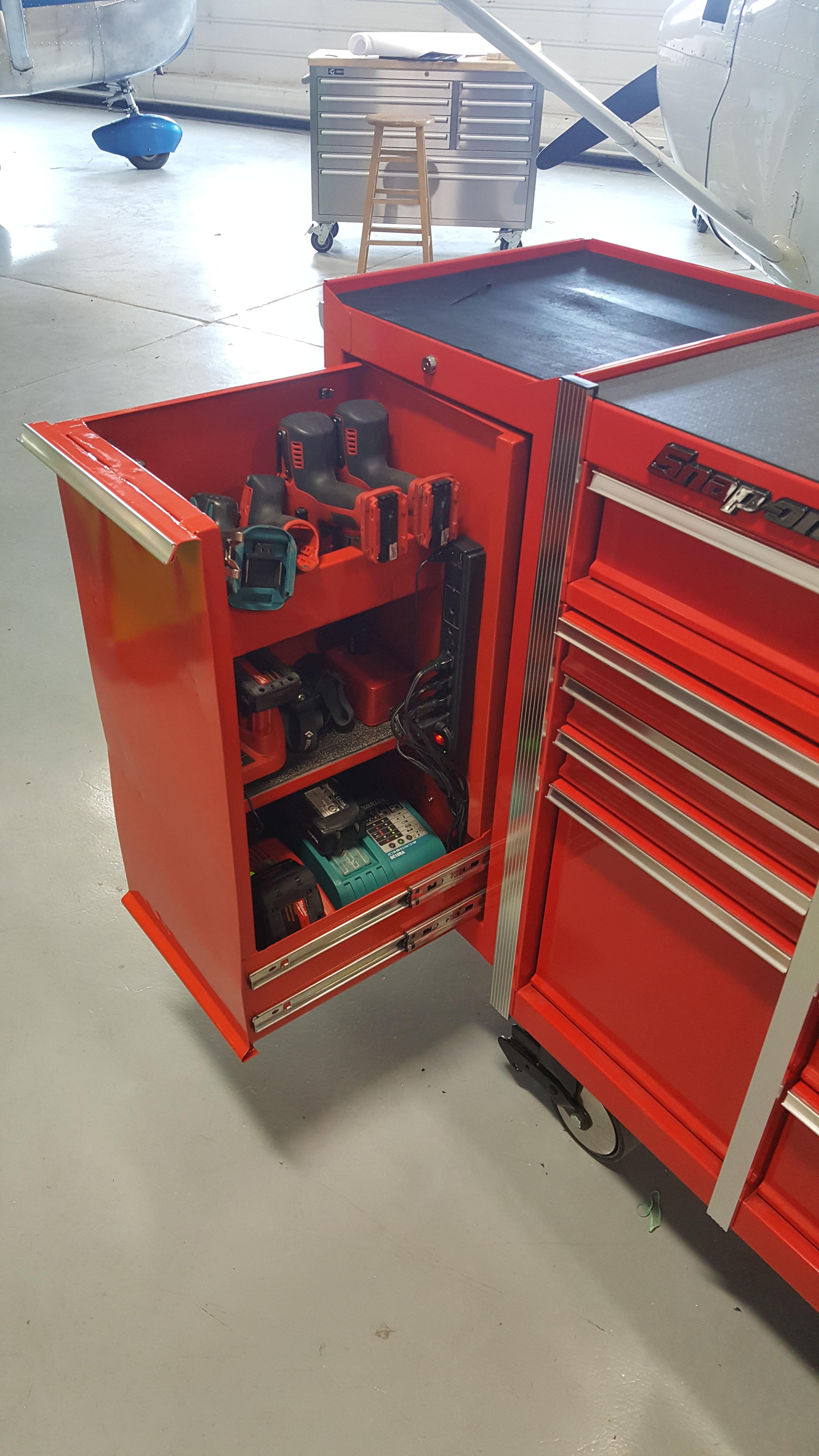
My finished product, a custom charging station for all of my power tools, based off of Snap-On's powerbank design.
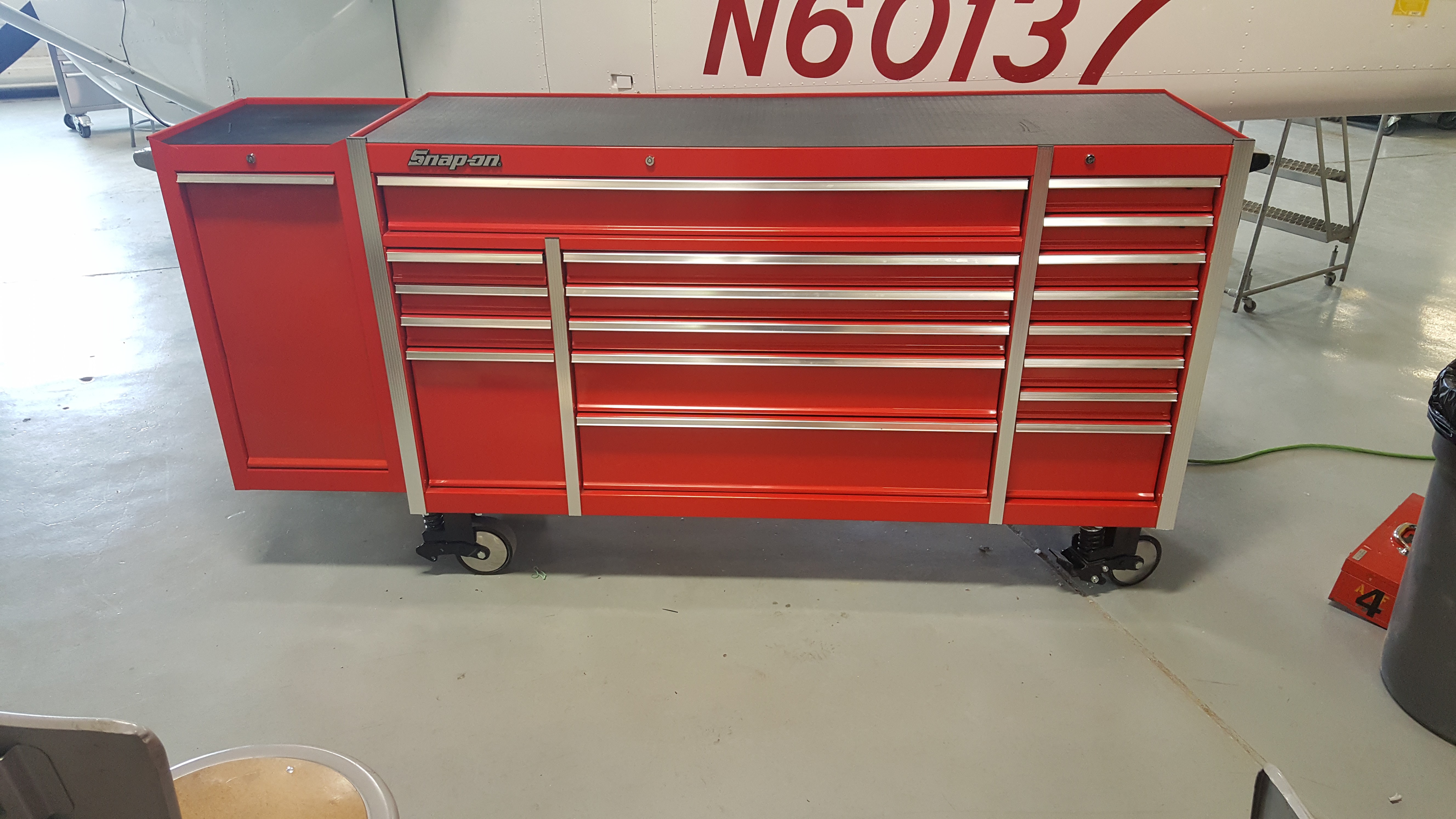 The whole box - finished product.
The whole box - finished product.
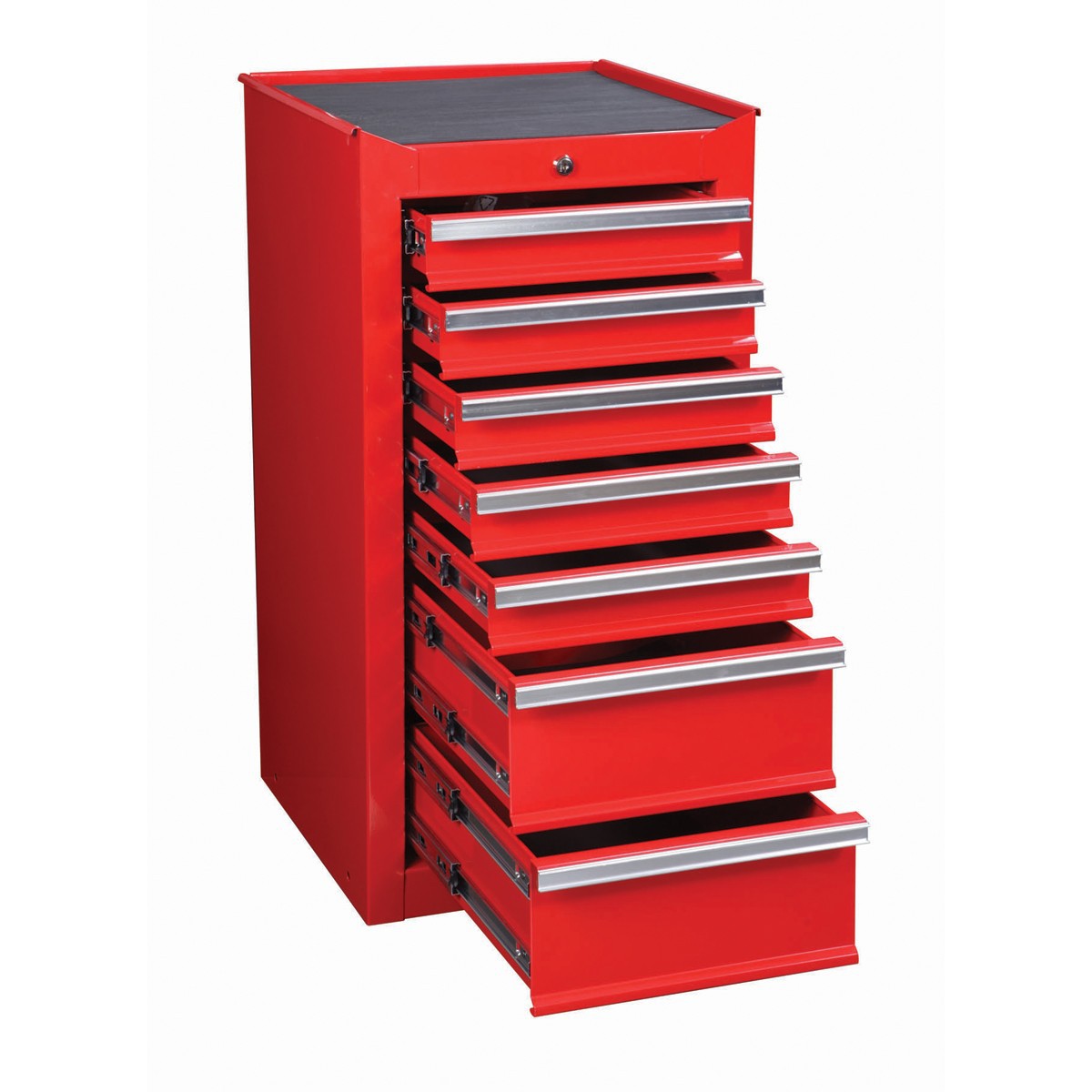 Here is the basis of the project, a Harbor Freight 7 drawer 18" side cabinet, which I plan to attach to the side of my current 72" roller. I essentially bought this for the outside frame, one of the drawer pulls and the slides. This cost me $190, but for what I got out of it, I think it was a good starting purchase for the project.
Here is the basis of the project, a Harbor Freight 7 drawer 18" side cabinet, which I plan to attach to the side of my current 72" roller. I essentially bought this for the outside frame, one of the drawer pulls and the slides. This cost me $190, but for what I got out of it, I think it was a good starting purchase for the project.
 I started the project with gutting the box. After removing all of the drawers, I selected 2 top slides, a center slide and 2 bottom slides on the left and 2 bottom slides on the right of the box which I would be keeping to slide the drawer in and out. I drilled out the rivets on the slides I didn't need and then began working on the drawer. First I fabricated the left or "back" panel of the drawer out of 16ga. steel, then used a sheet metal brake to bend the back lip and then a square sheet metal punch to cut out the slots for the slides. After initial installation, I had to "fine tune" the holes either up or down with the punch to get the slides properly aligned.
I started the project with gutting the box. After removing all of the drawers, I selected 2 top slides, a center slide and 2 bottom slides on the left and 2 bottom slides on the right of the box which I would be keeping to slide the drawer in and out. I drilled out the rivets on the slides I didn't need and then began working on the drawer. First I fabricated the left or "back" panel of the drawer out of 16ga. steel, then used a sheet metal brake to bend the back lip and then a square sheet metal punch to cut out the slots for the slides. After initial installation, I had to "fine tune" the holes either up or down with the punch to get the slides properly aligned.
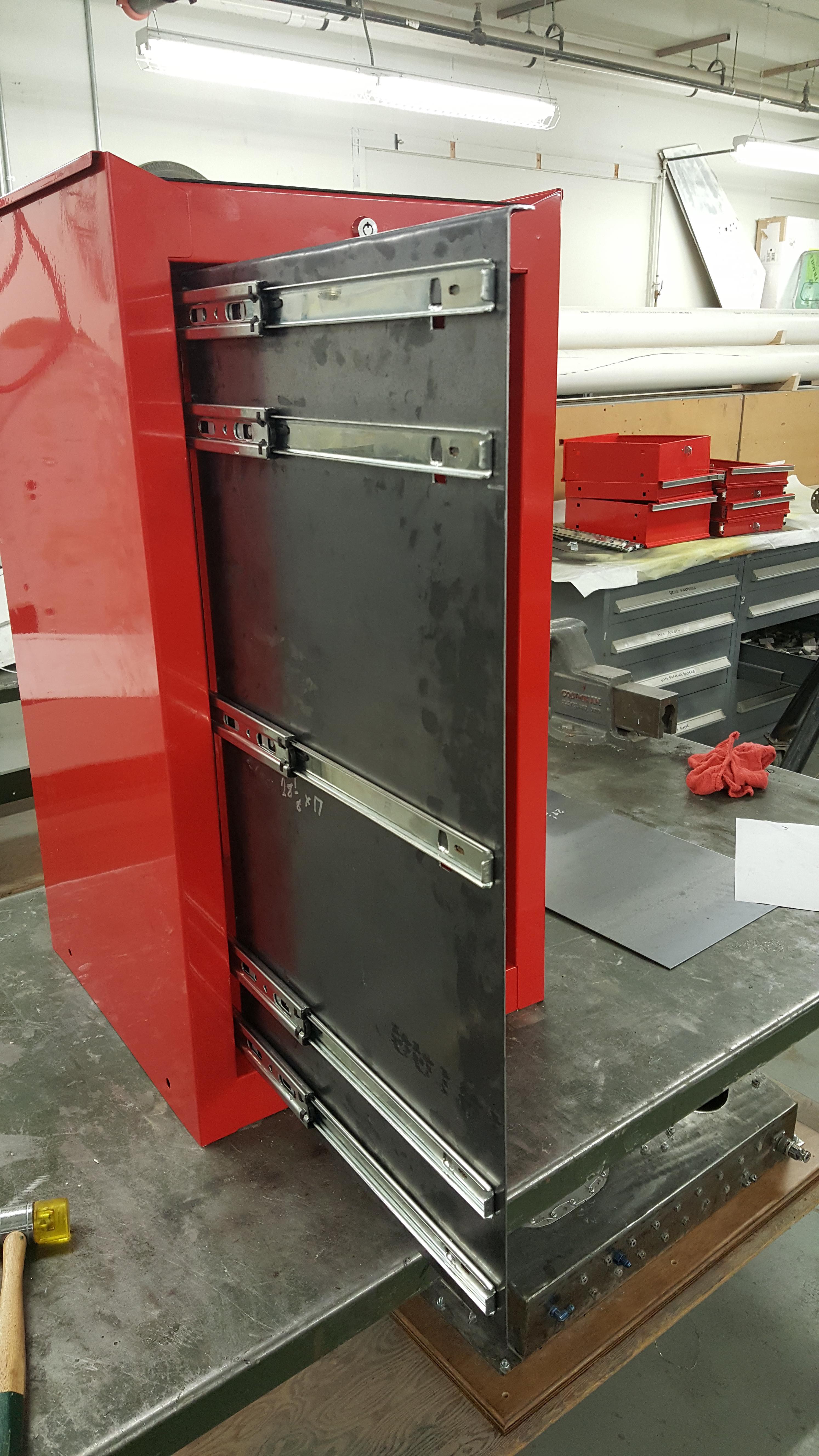

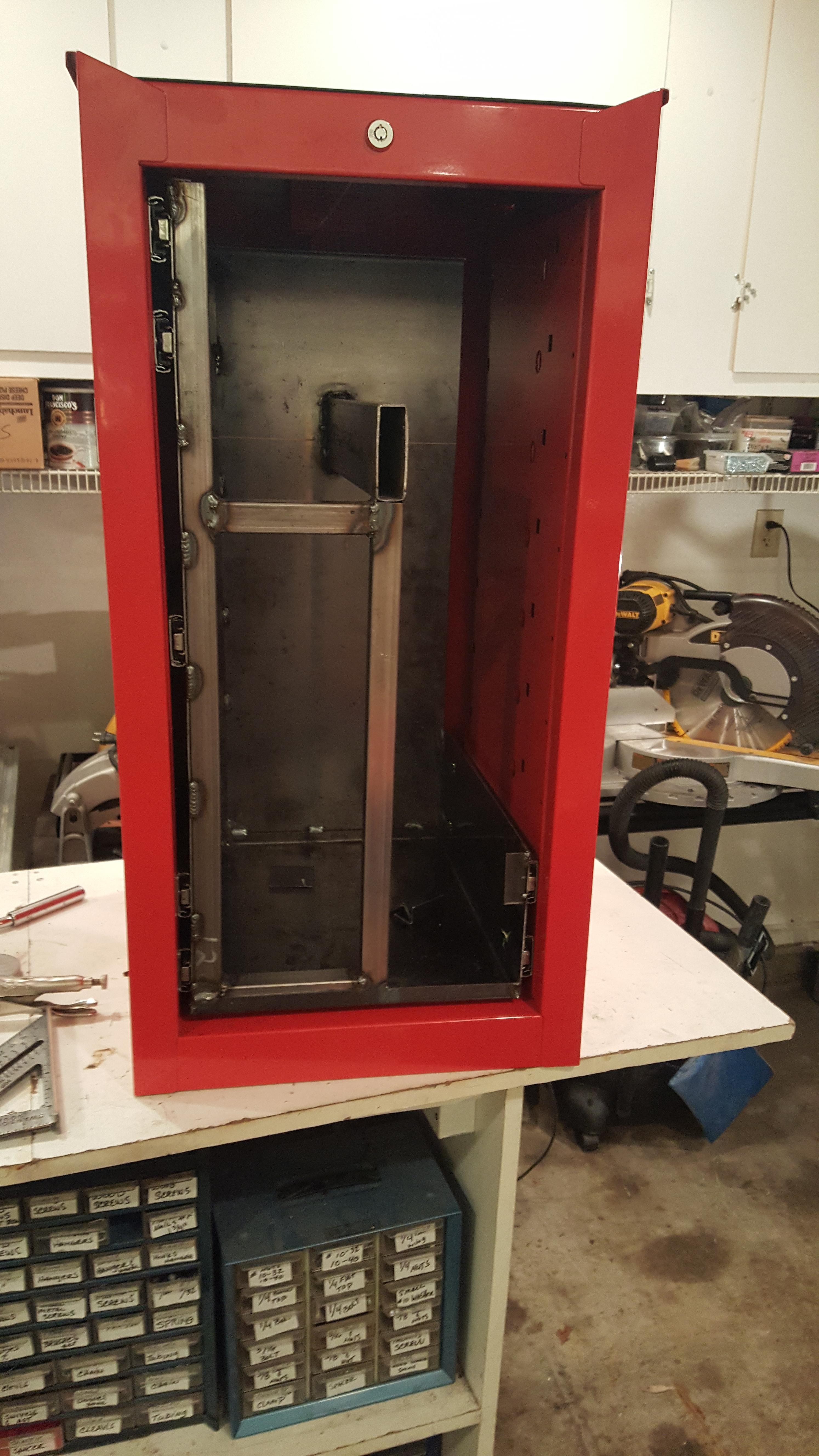 All tack welded up
All tack welded up
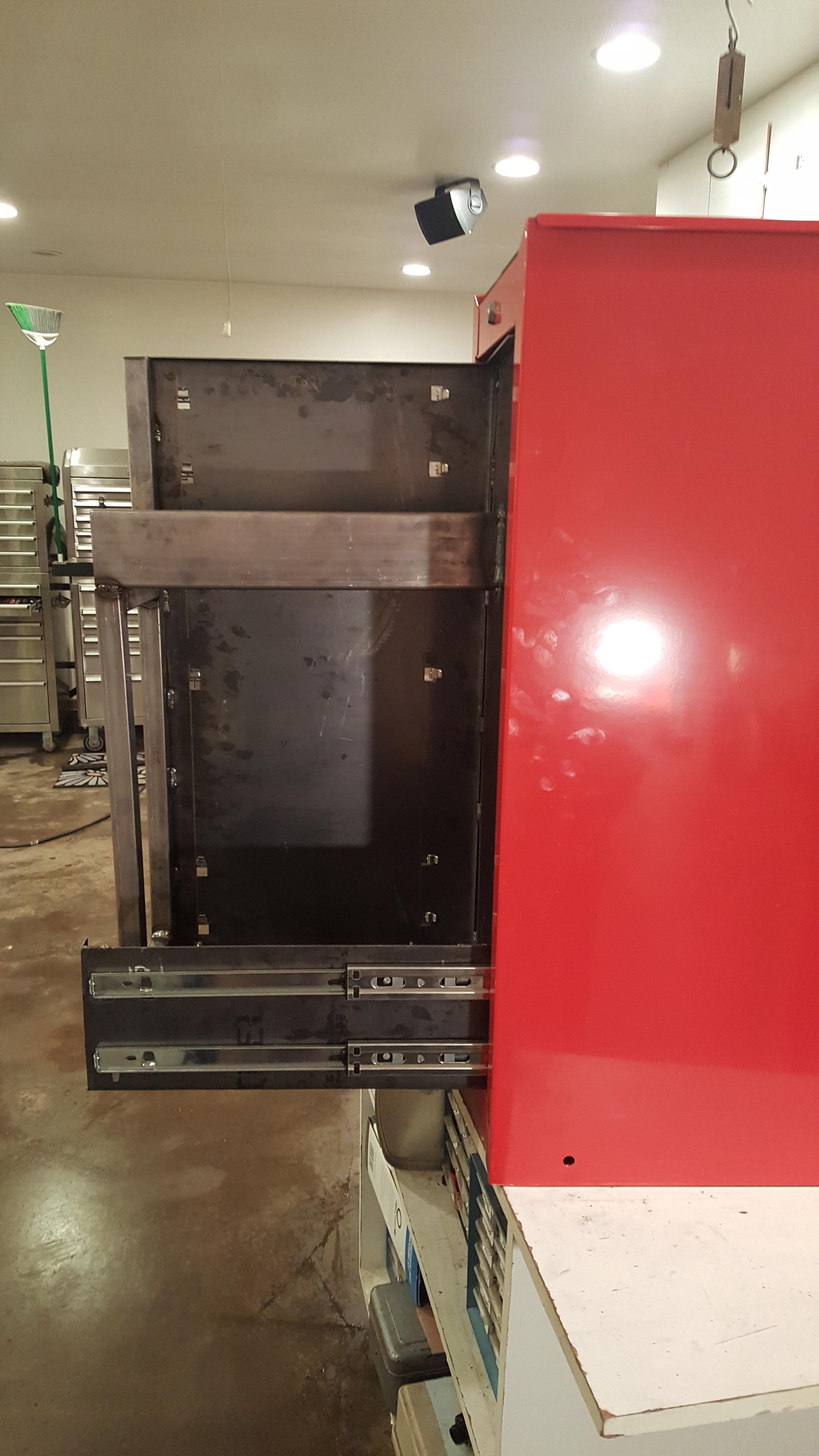
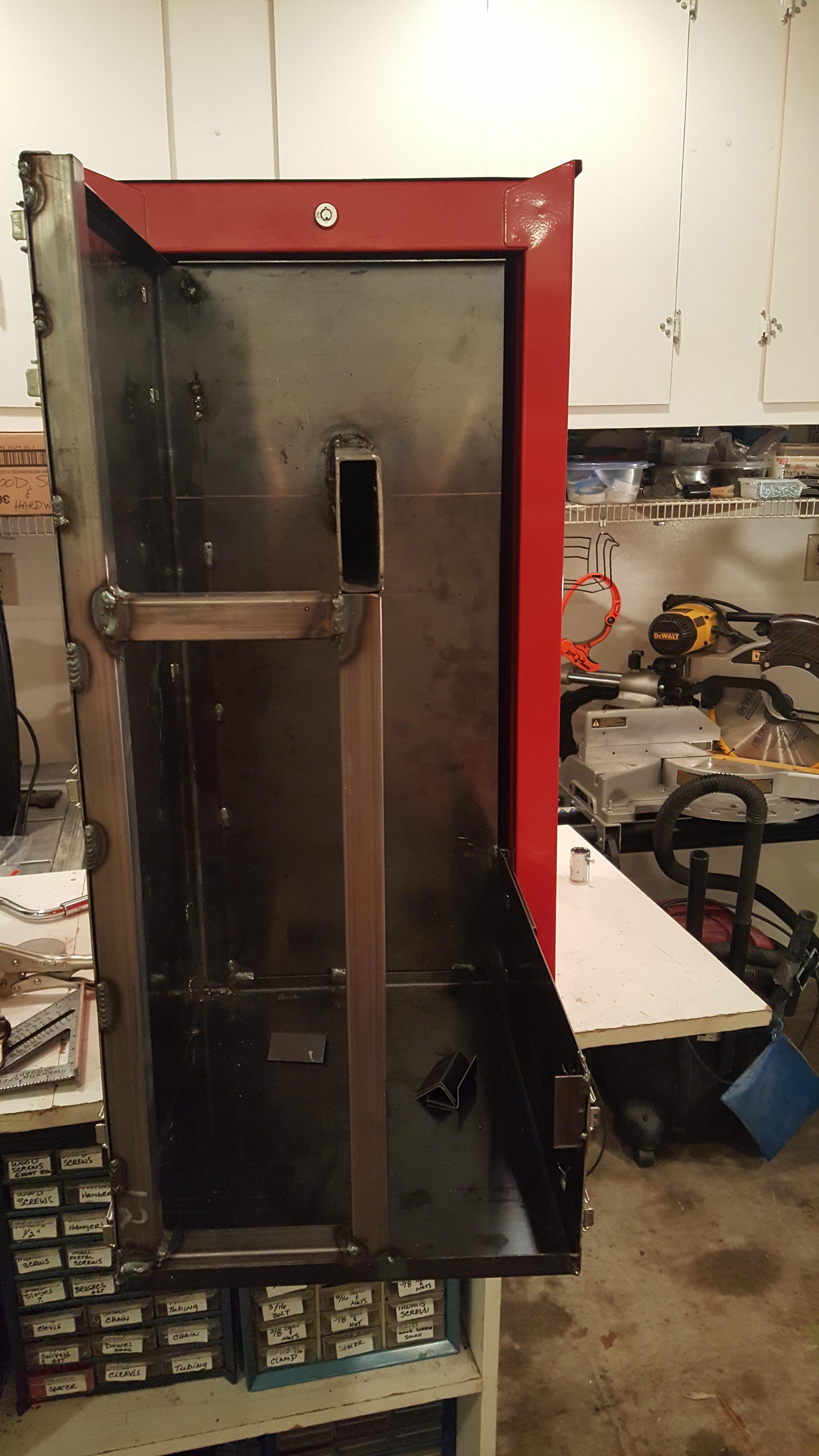 I fabricated the bottom pan and right side plate as one piece and then fabricated the back plate as its own. I used 16ga. 1x1 tubing for the front frame and then 16ga 3x1 tubing for the tool rest. My original plan was to have the drag chain rest inside of the 3x1" channel, so I cut the back plate and made the back of the plate open, however, once the drag chain arrived, I discovered that it was too large to fit, so I decided to scrap that idea and instead continued decided to place the drag chain under the tool rest plate which will go under the tool rest and span to the left side plate.
I fabricated the bottom pan and right side plate as one piece and then fabricated the back plate as its own. I used 16ga. 1x1 tubing for the front frame and then 16ga 3x1 tubing for the tool rest. My original plan was to have the drag chain rest inside of the 3x1" channel, so I cut the back plate and made the back of the plate open, however, once the drag chain arrived, I discovered that it was too large to fit, so I decided to scrap that idea and instead continued decided to place the drag chain under the tool rest plate which will go under the tool rest and span to the left side plate.
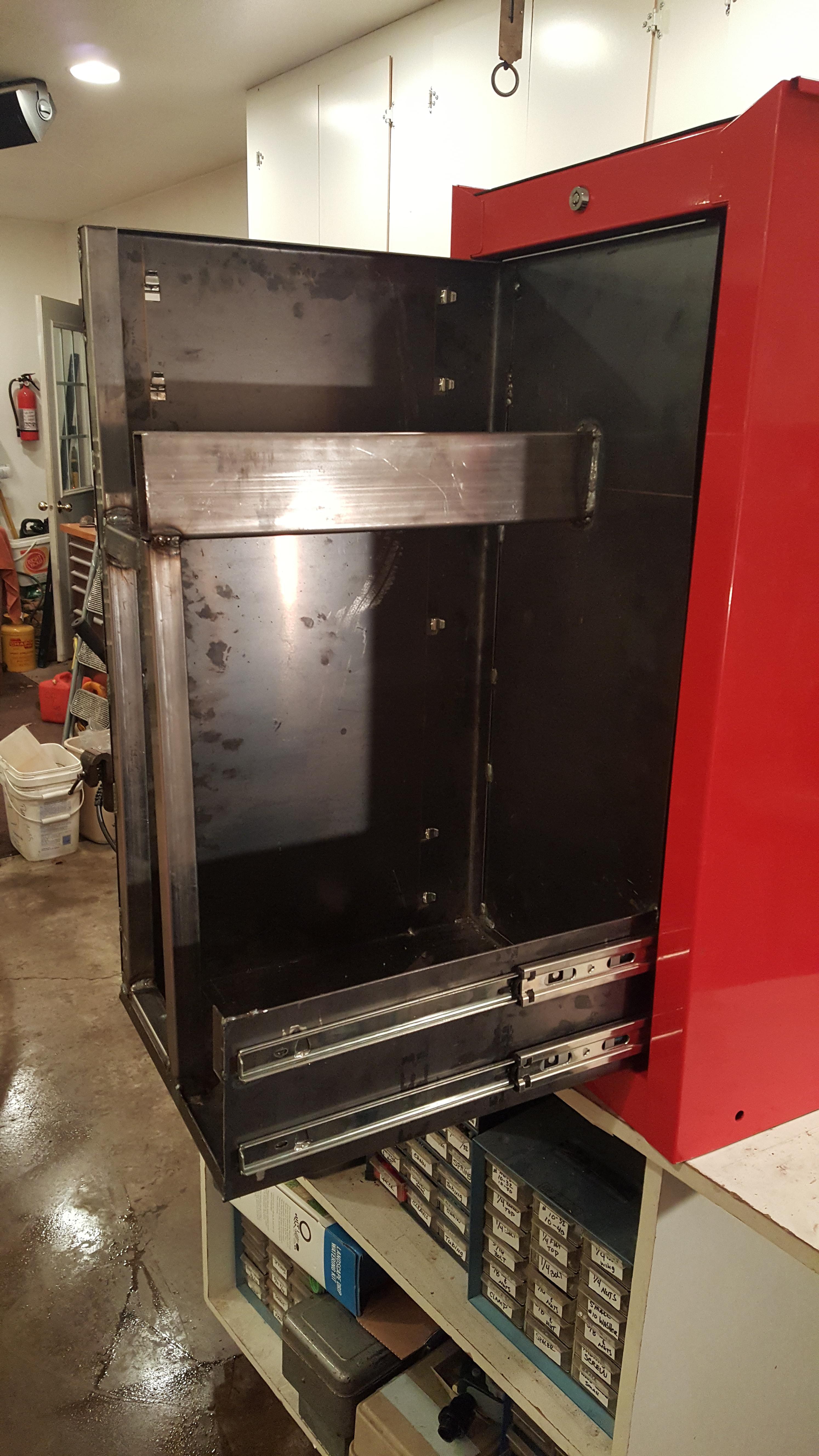
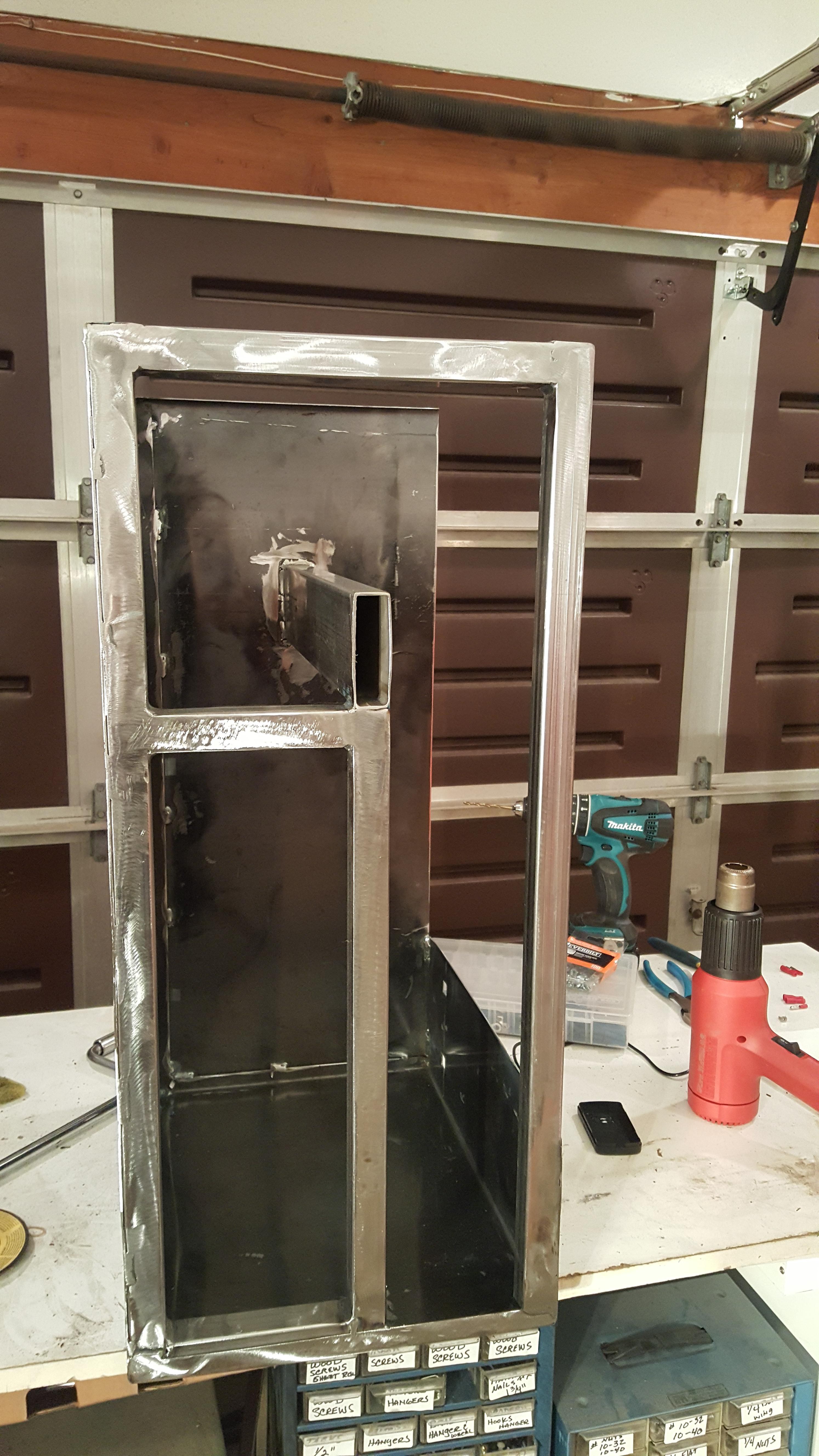 My original intent was to only have a center support and then have a single tab off of the right rail, with the intent of making it as light as possible, however, I had some concerns about the door bending, so I decided to add a full frame for the front.
My original intent was to only have a center support and then have a single tab off of the right rail, with the intent of making it as light as possible, however, I had some concerns about the door bending, so I decided to add a full frame for the front.
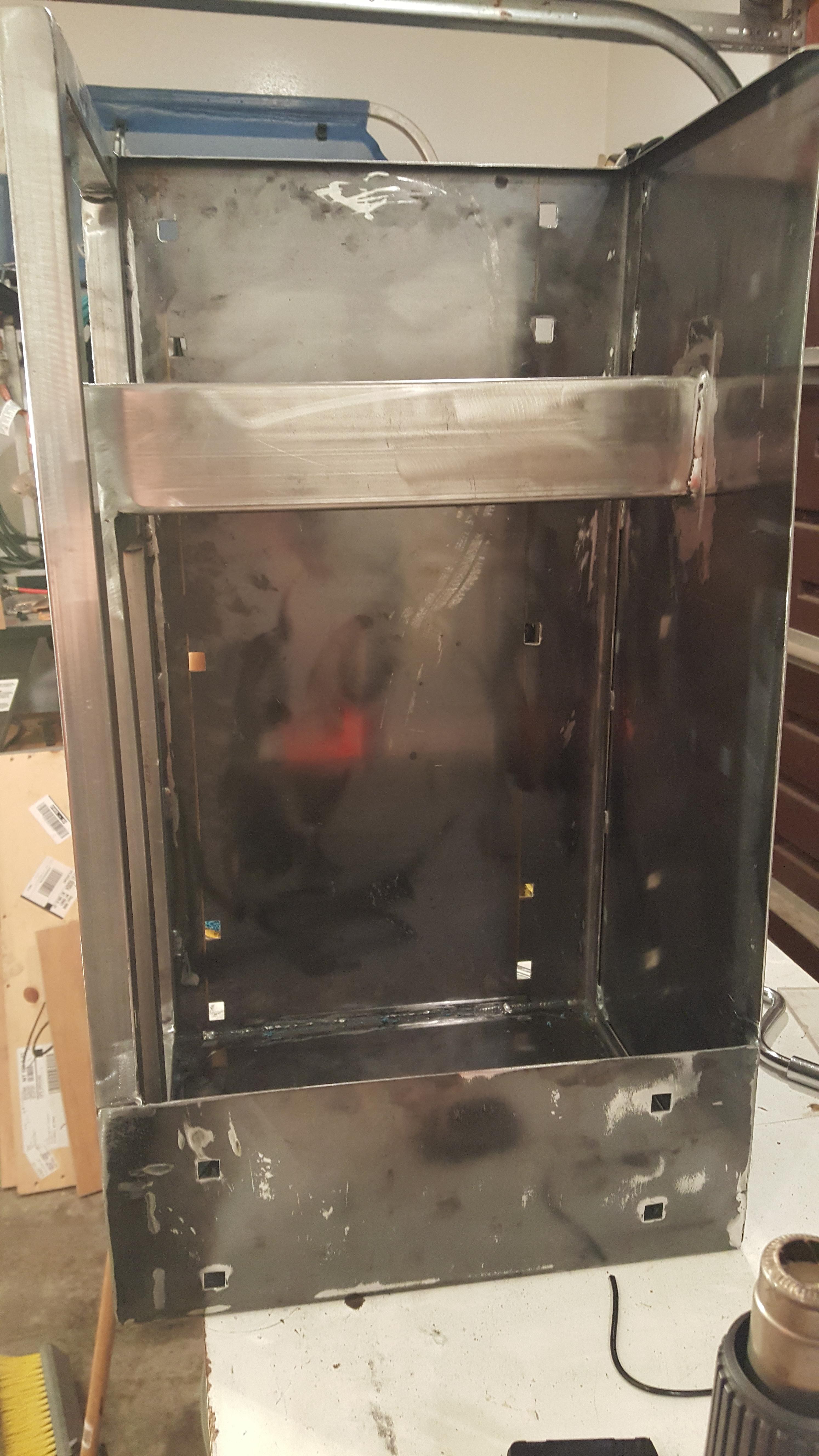 I used an 80 grit flap wheel to grind down my welds to a smooth finish and to get most surfaces 'paint ready'
I used an 80 grit flap wheel to grind down my welds to a smooth finish and to get most surfaces 'paint ready'
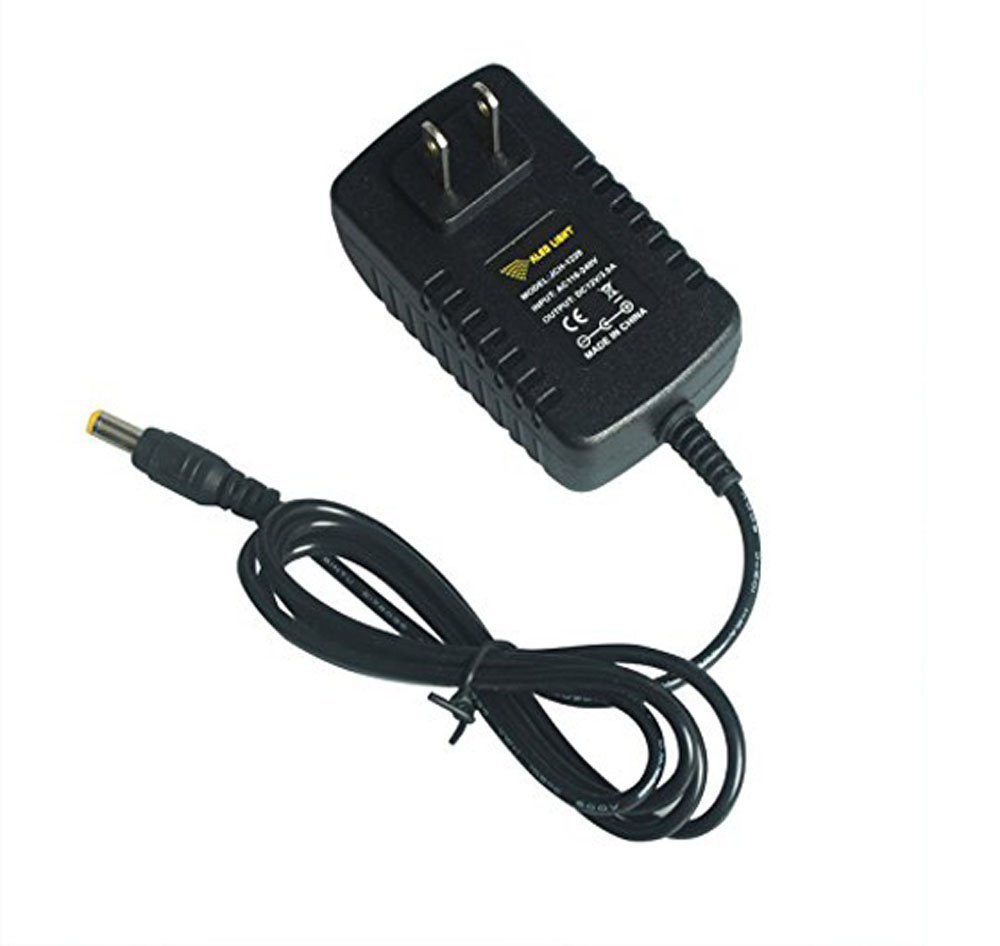 I purchased a 125v AC to 12V DC LED lighting driver off of Amazon to provide 12v to my USB charger. The adapter was designed to be a wall adapter, however, after looking at the pictures online, I was pretty certain I would be able to rewire it to be hard wired.
I purchased a 125v AC to 12V DC LED lighting driver off of Amazon to provide 12v to my USB charger. The adapter was designed to be a wall adapter, however, after looking at the pictures online, I was pretty certain I would be able to rewire it to be hard wired.
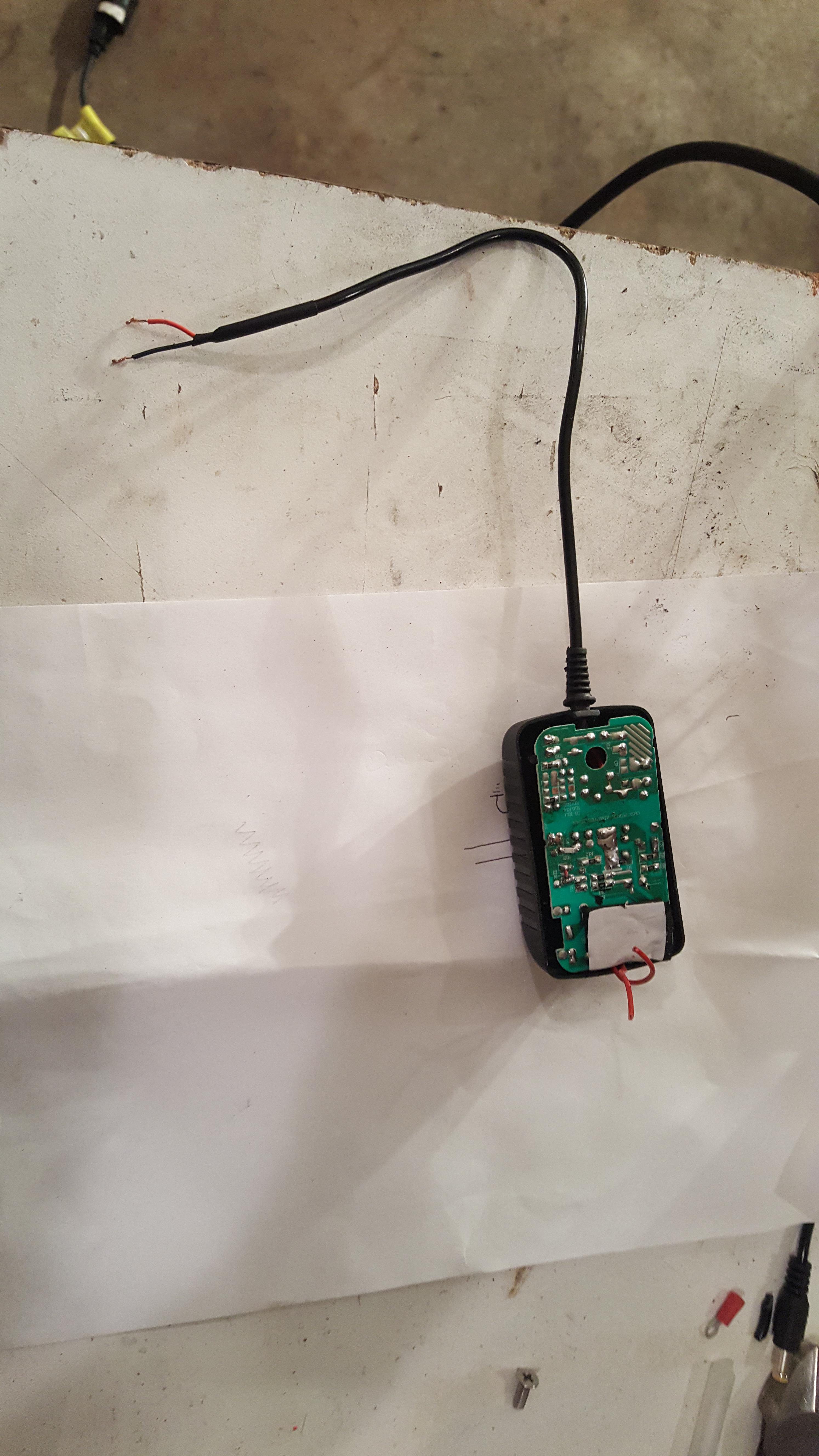 I took apart the AC adapter, cut off the slotted pins and then pulled them out. I took the back plate to a belt sander and sanded down the raised section where the power plug was so that I could mount it flush..
I took apart the AC adapter, cut off the slotted pins and then pulled them out. I took the back plate to a belt sander and sanded down the raised section where the power plug was so that I could mount it flush..
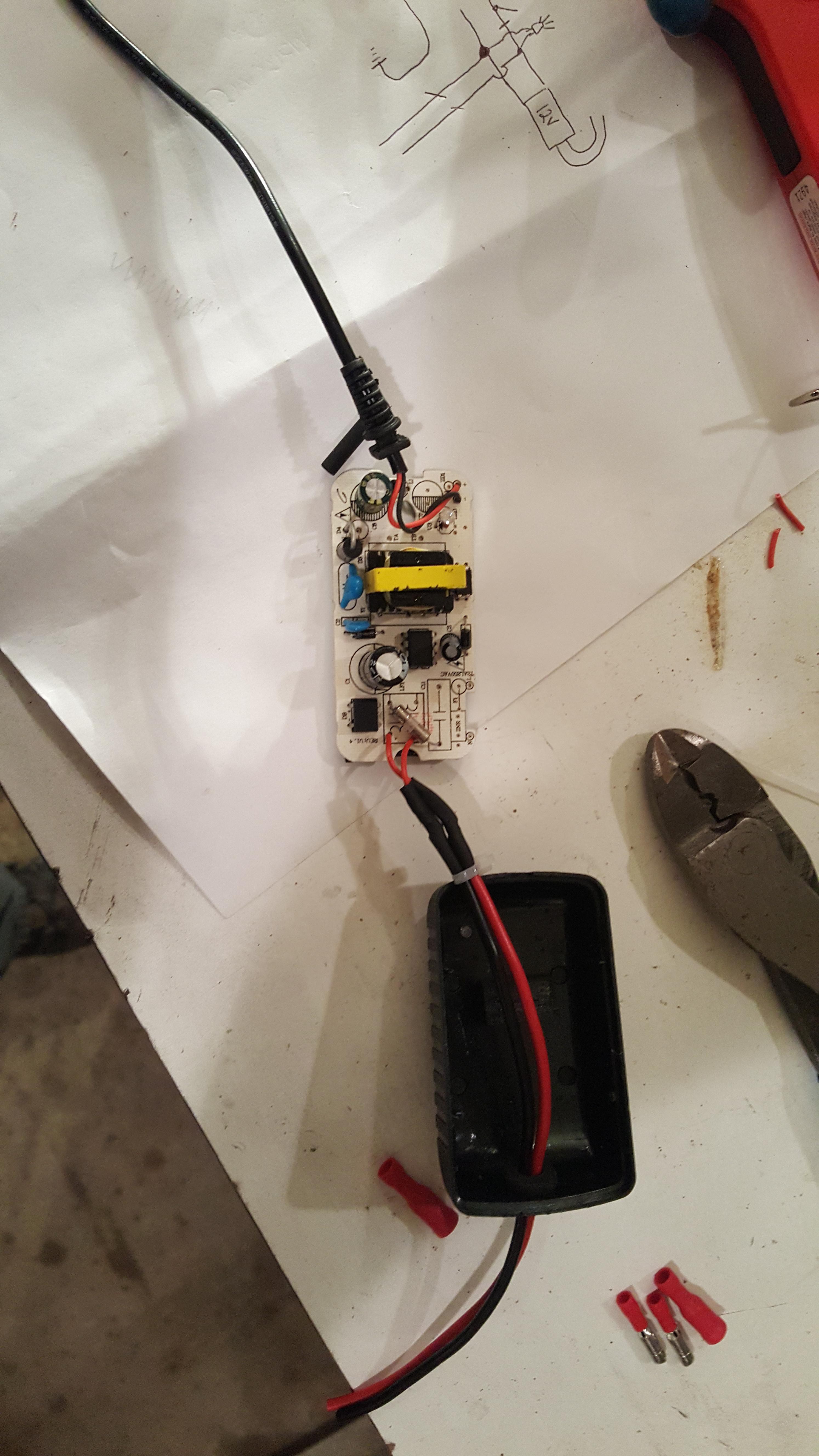 I then removed the circuitry from the case, drilled a 3/8" hole in the case and installed a rubber grommet in the case. I used 14ga. wire to provide leads, then soldered it to the existing leadings, added heatshrink and then used a zip tie to prevent the cable from being pulled out of the case. I reassembled the adapter and then applied headshrink tubing to the leads coming out of the adapter.
I then removed the circuitry from the case, drilled a 3/8" hole in the case and installed a rubber grommet in the case. I used 14ga. wire to provide leads, then soldered it to the existing leadings, added heatshrink and then used a zip tie to prevent the cable from being pulled out of the case. I reassembled the adapter and then applied headshrink tubing to the leads coming out of the adapter.
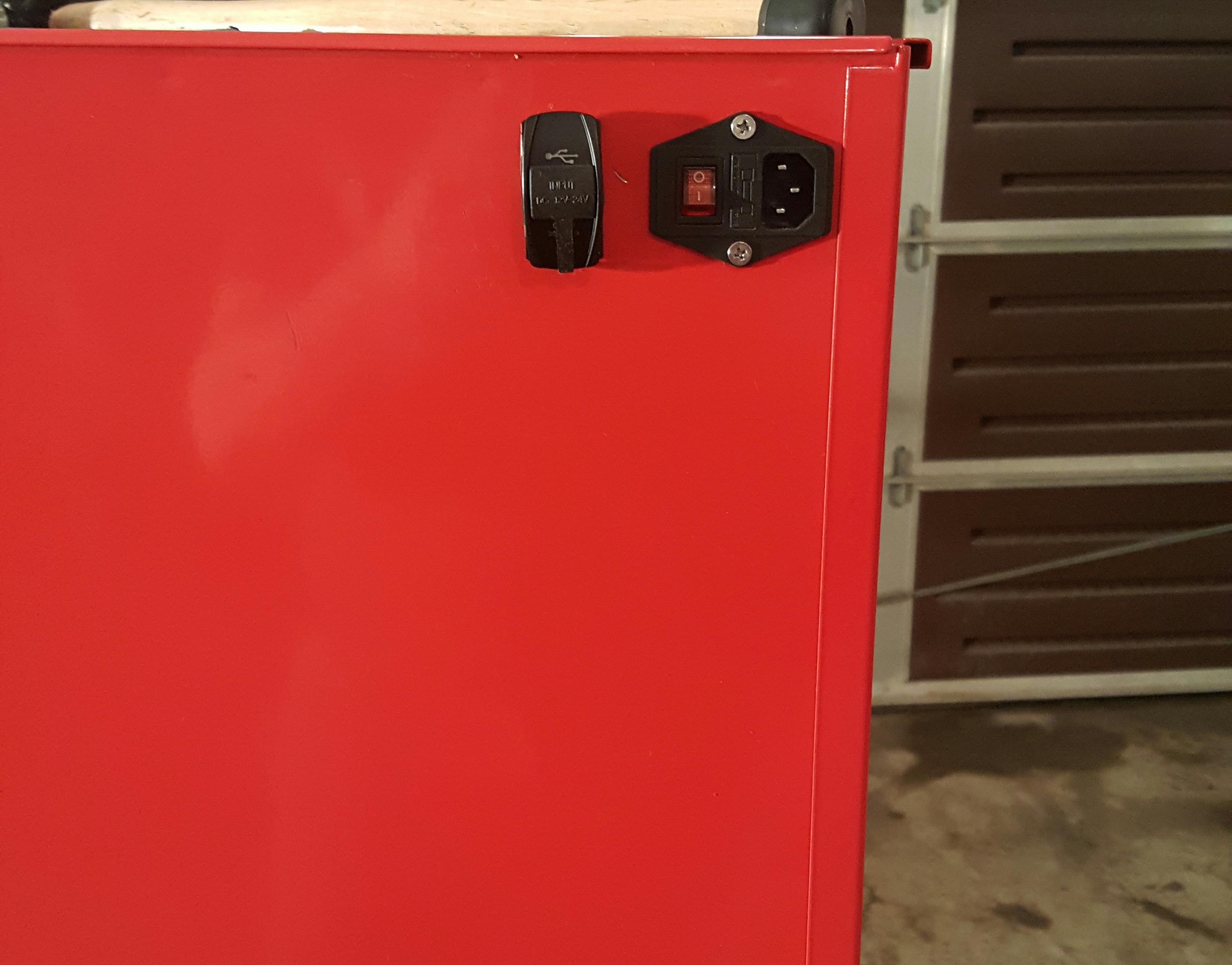 I used a dremel with a cut off wheell and a jig saw with a metal blade to cut out the holes for the IEC plug power inlet and USB charger.
I used a dremel with a cut off wheell and a jig saw with a metal blade to cut out the holes for the IEC plug power inlet and USB charger.
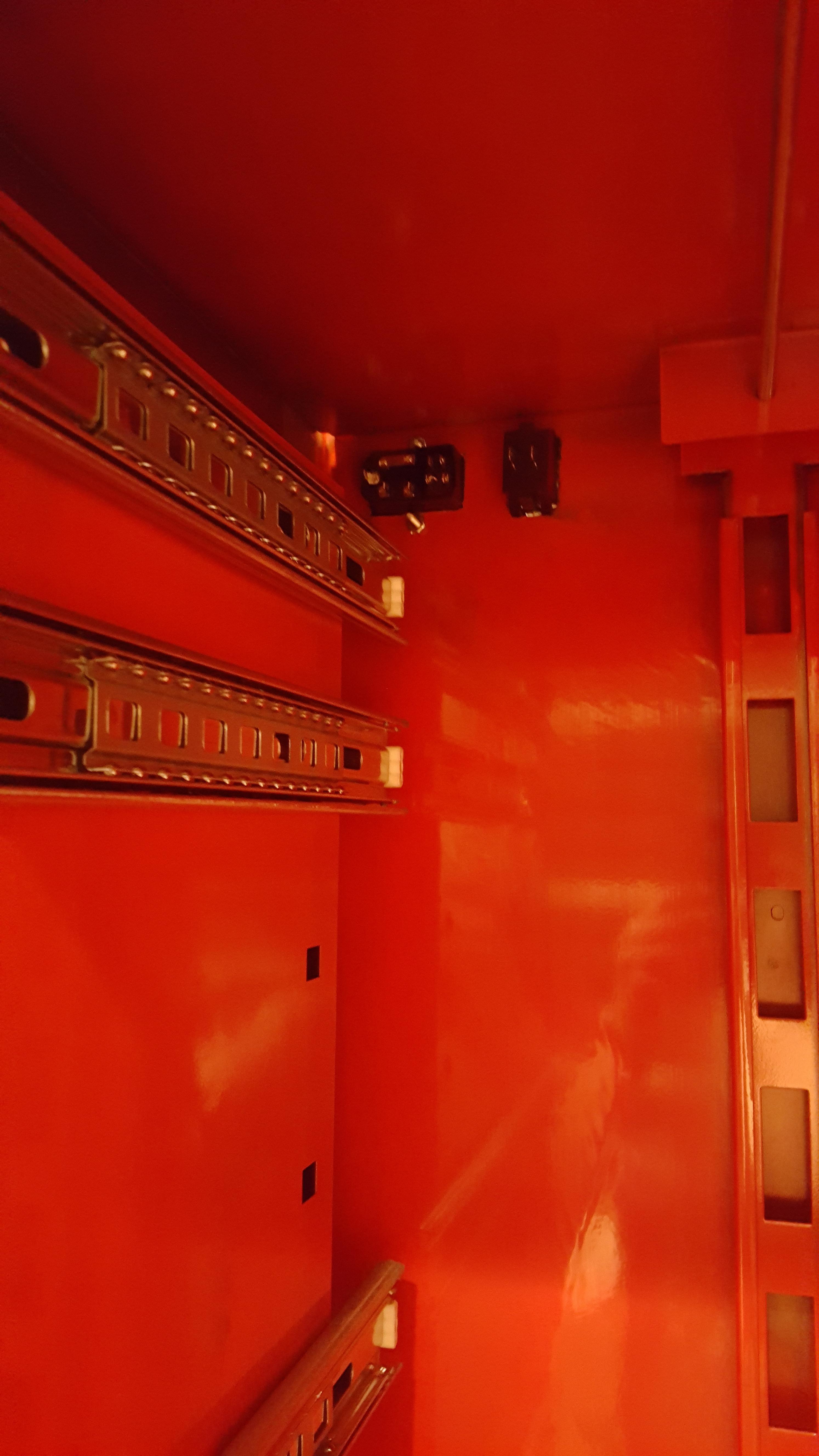 I used stainless 8-32 fasteners to secure the power inlet to the case. I ran the bottom screw longer as I will use this screw as my grounding point.
I used stainless 8-32 fasteners to secure the power inlet to the case. I ran the bottom screw longer as I will use this screw as my grounding point.
 I made a custom harness out of 14ga. wire and heatshrink to wire the power inlet to the power switch and then to the driver. I made a lead which I dropped down the back of the cabinet which will connect to a power strip inside of the drawer.
I made a custom harness out of 14ga. wire and heatshrink to wire the power inlet to the power switch and then to the driver. I made a lead which I dropped down the back of the cabinet which will connect to a power strip inside of the drawer.
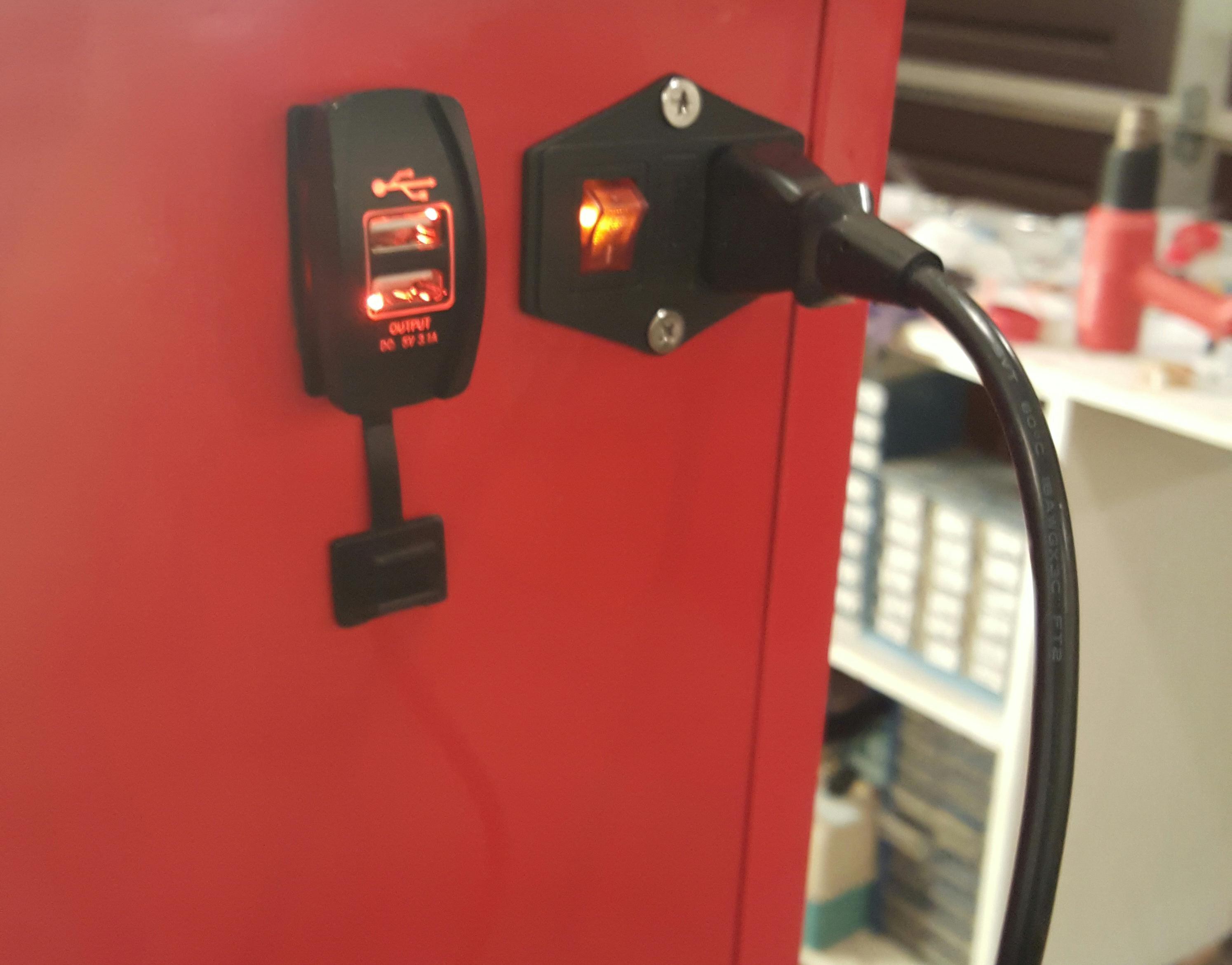 USB ports powered and working.
USB ports powered and working.
 I bent up the shelf which will hold the power tools. My plan is to take my hydraulic punch and punch out circle in which each individual tool will sit.
I bent up the shelf which will hold the power tools. My plan is to take my hydraulic punch and punch out circle in which each individual tool will sit.
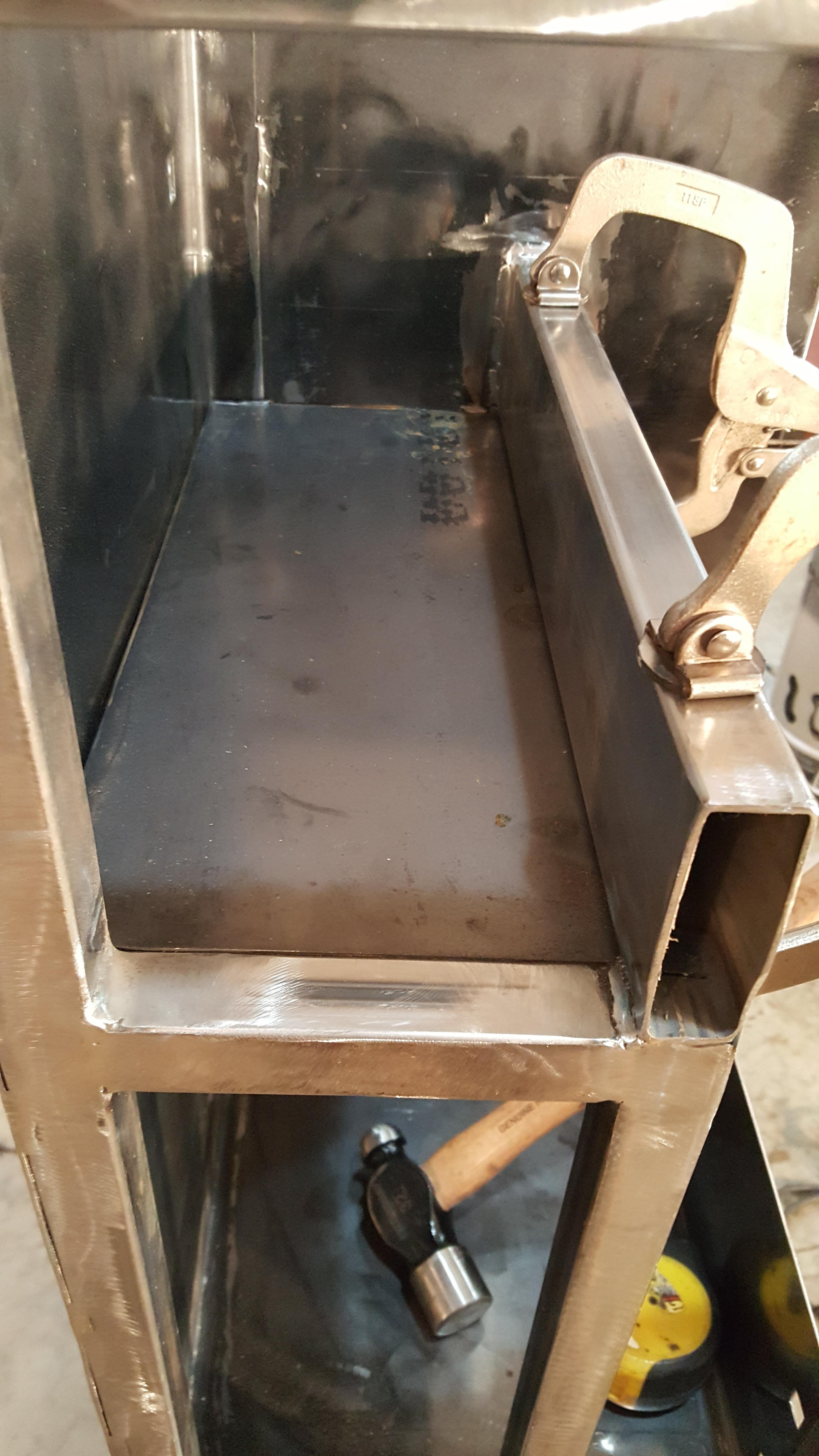

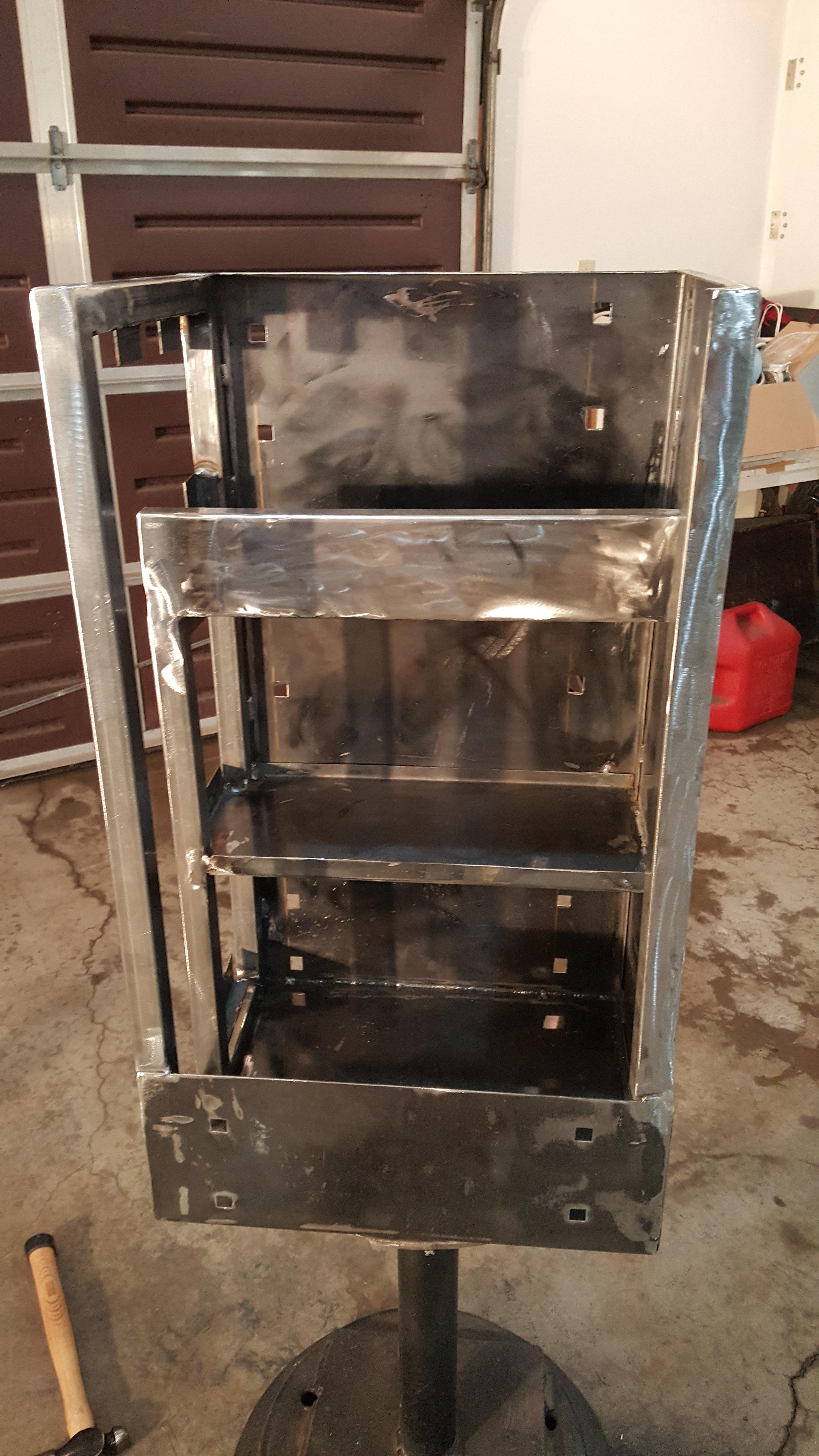 Both upper and lower shelves are welded in place.
Both upper and lower shelves are welded in place.
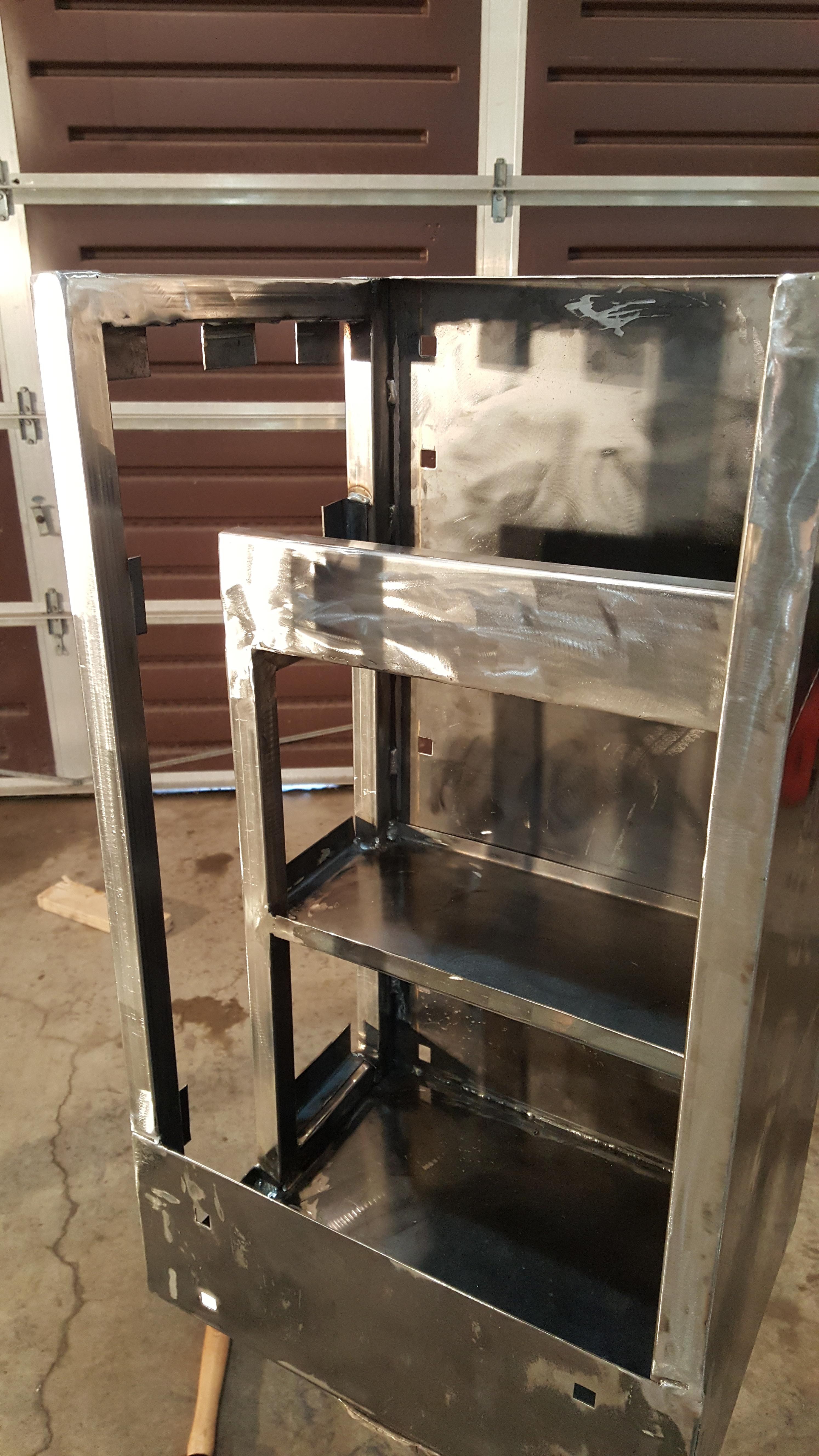
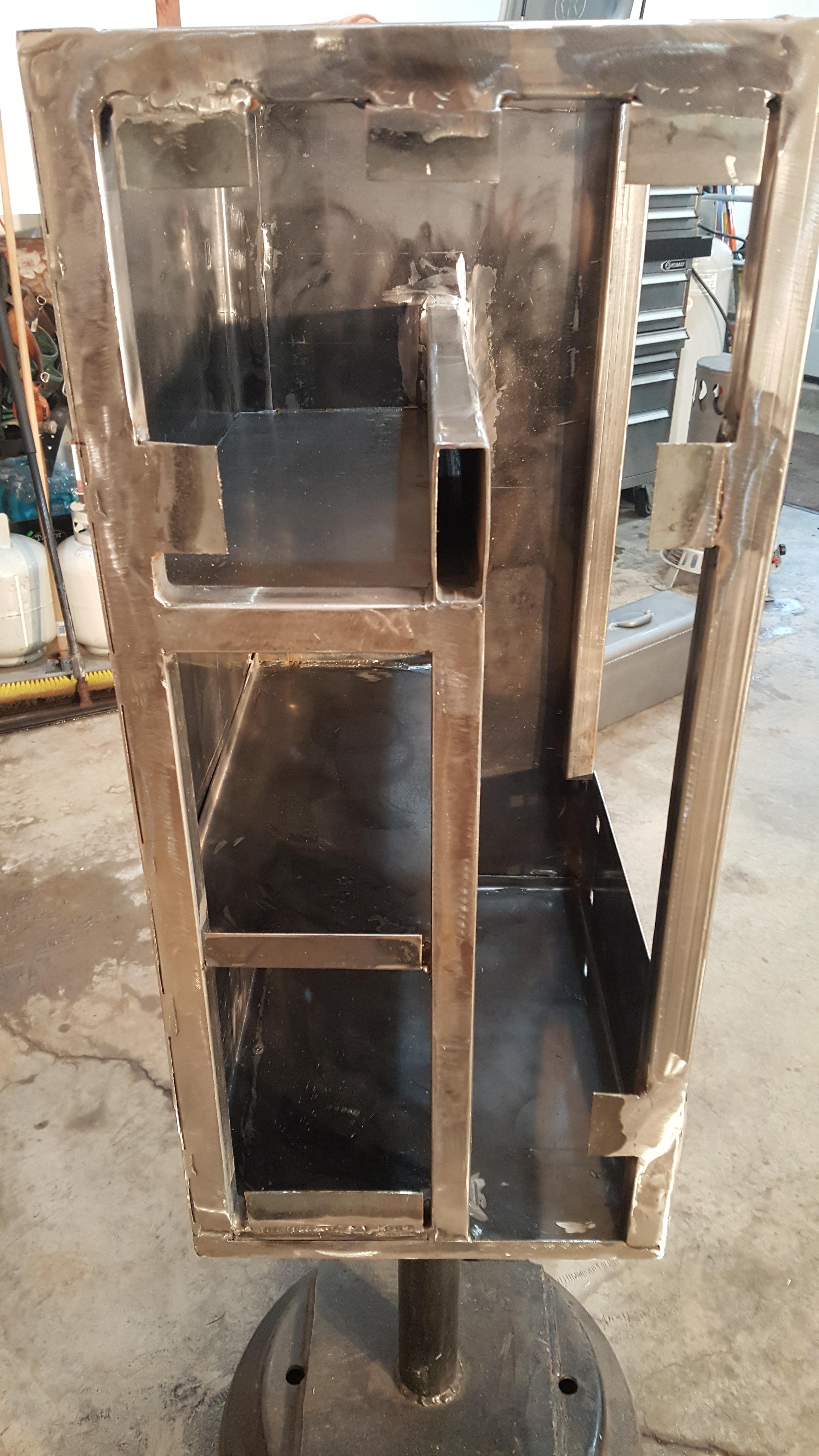 I welded tabs to the face off the cabinet which will be used to spot weld the face to cabinet drawer.
I welded tabs to the face off the cabinet which will be used to spot weld the face to cabinet drawer.
 Test fitting the drawer after welding in the shelves. Everything is still square and fits well.
Test fitting the drawer after welding in the shelves. Everything is still square and fits well.

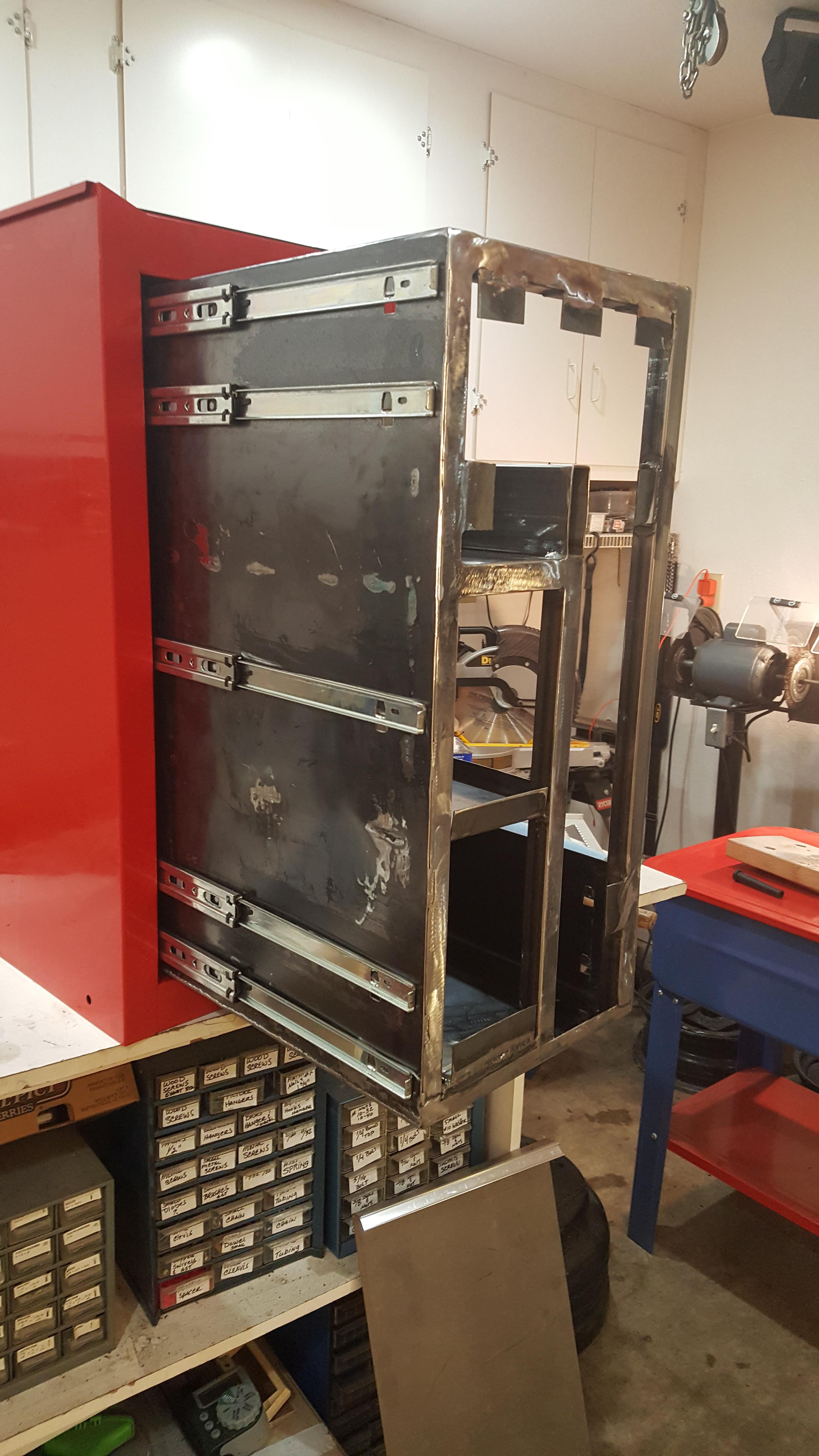
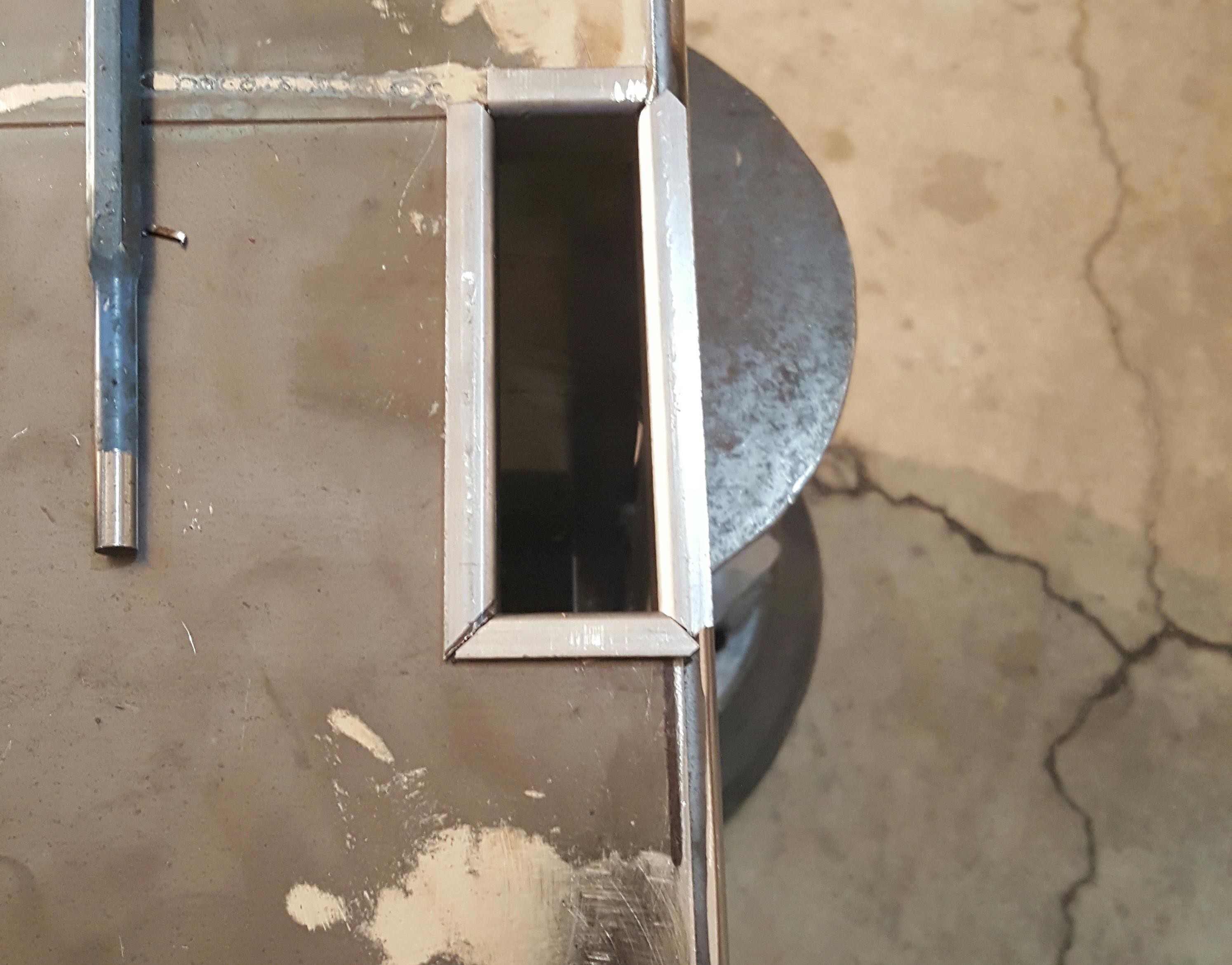 I cut a hole in the back of the cabinet right...
I cut a hole in the back of the cabinet right...
Read more »
- 1 × Harbor Freight 7 drawer side chest $169.99 7 drawer side chest from Harbor Freight - the heart of the project - http://www.harborfreight.com/18-in-7-drawer-glossy-red-end-cabinet-for-roller-tool-chest-68785.html
- 8 × 8-32 Steel Rivnut Nut Inserts https://www.amazon.com/gp/product/B00XXFU6KI/ref=oh_aui_detailpage_o03_s00?ie=UTF8&psc=1
- 6 × 1/4-20 Steel Rivnut Nut Inserts https://www.amazon.com/gp/product/B01EMY64C2/ref=oh_aui_detailpage_o03_s00?ie=UTF8&psc=1
- 1 × Mictuning Universal Rocker Style Car USB Charger https://www.amazon.com/gp/product/B013W8KPUG/ref=oh_aui_detailpage_o07_s00?ie=UTF8&psc=1
- 1 × ALED LIGHT® 12 Volt 2 Amp LED Strip Light Power Adapter https://www.amazon.com/gp/product/B013SSU92Y/ref=oh_aui_detailpage_o02_s00?ie=UTF8&psc=1
View all 9 components
-
1
Step 1
Remove all drawers from the side chest. Slide each drawer out, depress the black retention clip and pull the drawers completely out of the slides. Drill out rivets on drawer slides that are attached to drawer and use a rubber mallet to tap off drawer slides. Remove unnecessary slides from right and left sides of chest body. Drill out rivets where applicable.
Note, not all drawer slides have rivets on them where attached to the chest body. This is to allow the drawer slides to follow the slide above them on drawers which had multiple slides. If your slides are sticking once you complete your drawer, you can remove the rivet on the slides that are sticking, which will allow them a bit of movement to allow them to track better.

Chest as purchased

Chest with all drawers removed, drawer slides removed which wont be used and side plate installed.
-
2
Step 2
Use a sheet metal shear or grinder with a cutting wheel to cut sheet metal to size, then use a brake to bend in attachment angles. Make the left panel as a piece, the bottom / right side as one piece and then make the back of the panel as another panel.
Mark centers of your slides on the left and right panels and use a square sheet metal punch or dremel to cut out square slots for the slide grips to attach to.
Install slides on the panel and then insert them into slides on the cabinet. Slide the panel in and out to check alignment and then adjust slides that are sticking by adjusting slotting up or down as applicable.

Checking allignment of left panel slides.
-
3
Step 3
Tack weld the left, back and bottom/right pan together with the panels installed. Remove the panels, remove slides from the interior drawer and then square up and began adding.
Once you have the drawer squared, began measuring and cutting your frame work for the front of the cabinet and then began tack welding the frame work for the front and mid support structures.

Once you have everything adequately squared and tack welded throughout, you can begin to weld all of the structures. When welding on the sheet metal, avoid making long continuous welds to avoid distortion along the metal. Avoiding distortion is very important on this project to allow the slides to move with limited drag, which will prolong the life of the drawer slides.
View all 12 instructions
Discussions
Snap On Power Drawer Rack
Source: https://hackaday.io/project/20015-snap-on-powerbank-project
Posted by: taylorcultin.blogspot.com





0 Response to "Snap On Power Drawer Rack"
Post a Comment